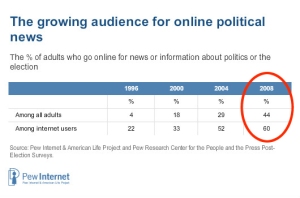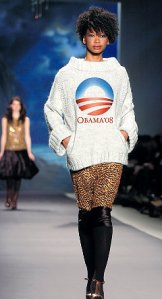The Pew Research Center’s report on online political activity found a number of trends important for any campaigners, politicians or political communicators to pay attention to. 
The report found that the number of people going online to find political information is rapidly increasing, with 60 percent of all Internet users going online for political aims during the 2008 campaign. It also found that these interested people are not only observing the blogs, but 18 percent of them are commenting on the information out there. What does this online interactivity mean for the country’s political conversations?
The speed at which news travels is faster than ever before, as any political junkie can get instant, legitimate updates on their mobile devices, which we know never leave our sides.
The rise in political blogging, and blogging in any type of news outlets for that matter, has stirred up a great amount of attention as to whether or not these “citizen journalists” are helping or hurting America’s press. This summer, Jerry Bowles produced a piece “The Internet is Killing America’s Free Press and Why It Matters”, published on socialmediatoday. He made a valid point repeated by many concerned journalists that bloggers are usually not doing in-depth, investigative reporting. They don’t have the time or financial resources to travel the world and dig up news. This task has been mostly forgotten in the fast-paced, 24-hour aggregation news cycle except for within dying newspaper establishments. If newspapers continue to go under as more people go online for their information, Bowels argues that the American free press as we know it will no longer be able to efficiently serve its citizens.


 This invention gives politicians the opportunity to spread messages to interested constituents immediately. Their followers can re-tweet their statements to friends and create a buzz that bloggers and mainstream media can pick up on. Even the UK has noticed the impact the site has had on political communication with the population. (Check out the Telegraph’s article:
This invention gives politicians the opportunity to spread messages to interested constituents immediately. Their followers can re-tweet their statements to friends and create a buzz that bloggers and mainstream media can pick up on. Even the UK has noticed the impact the site has had on political communication with the population. (Check out the Telegraph’s article: 
